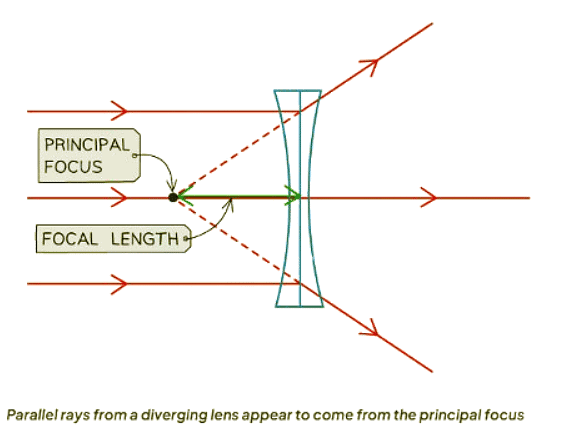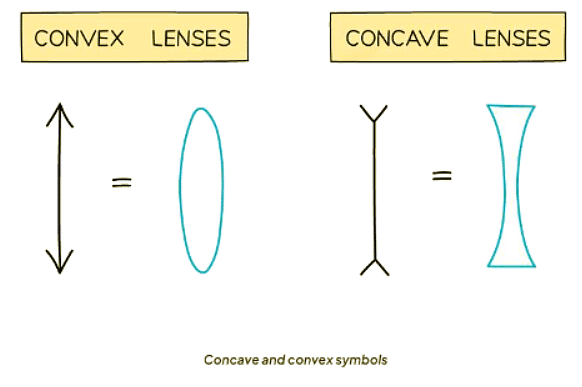Class 10 Exam > Class 10 Notes > Physics for GCSE/IGCSE > Thin Lenses
Thin Lenses | Physics for GCSE/IGCSE - Class 10 PDF Download
Features of Lens Diagrams
- Lens diagrams can be described using the following terms:
- Principal axis
- Principal focus, or focal point
- Focal length
- The principal axis is defined as:
- A line which passes through the centre of a lens
- The principal focus, or focal point, is defined as:
- The point at which rays of light travelling parallel to the principal axis intersect the principal axis and converge or the point at which diverging rays appear to proceed
- Focal Length Definition:
- The focal length of a lens refers to the distance between the center of the lens and the principal focus point.
Converging & Diverging Lenses
- Lenses Overview: Lenses are optical devices that create images by bending or refracting light. There are two main types of lenses: converging and diverging.
Converging Lenses
- Function: Converging lenses bring parallel rays of light together to a focal point.
- Principal Focus: This focal point is termed the principal focus of the lens.
- Lens Type: A converging lens is also known as a convex lens due to its outward curve.
- Focal Length: The distance from the lens to the principal focus is called the focal length. This distance varies based on the curvature of the lens - a more curved lens has a shorter focal length.

Question for Thin LensesTry yourself: What is the principal axis of a lens?View Solution
Diverging Lenses
- Parallel rays of light are caused to spread out from a focal point in a diverging lens.
- This type of lens is occasionally called a concave lens.
- The principal focus now becomes the focal point from which the rays appear to diverge.

Representing Lenses
- In diagrams, the following symbols are frequently utilized to depict each type of lens:

The document Thin Lenses | Physics for GCSE/IGCSE - Class 10 is a part of the Class 10 Course Physics for GCSE/IGCSE.
All you need of Class 10 at this link: Class 10
|
126 videos|194 docs|35 tests
|
FAQs on Thin Lenses - Physics for GCSE/IGCSE - Class 10
| 1. What are the key features of lens diagrams for converging and diverging lenses? |  |
Ans. Lens diagrams for converging and diverging lenses show the principal axis, focal points, object distance, image distance, object height, and image height.
| 2. How are thin lenses different from thick lenses in terms of diagram representation? |  |
Ans. Thin lenses are represented by a single line to denote the lens, while thick lenses are represented by two lines to show the thickness of the lens.
| 3. What information can be derived from a lens diagram for a converging lens? |  |
Ans. A lens diagram for a converging lens can provide information on the focal length, image distance, magnification, and the nature of the image formed.
| 4. How can one determine the type of image formed by a diverging lens using a lens diagram? |  |
Ans. By analyzing the position of the object and image relative to the focal point, one can determine if the image formed by a diverging lens is virtual, upright, and diminished.
| 5. How can lens diagrams be used to calculate the magnification of an image formed by a converging lens? |  |
Ans. The magnification of an image formed by a converging lens can be calculated by comparing the image height to the object height using the formula: magnification = image height / object height.
Related Searches




















